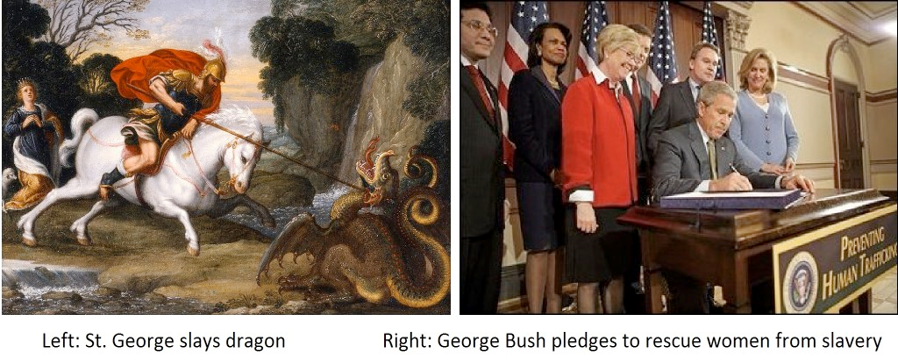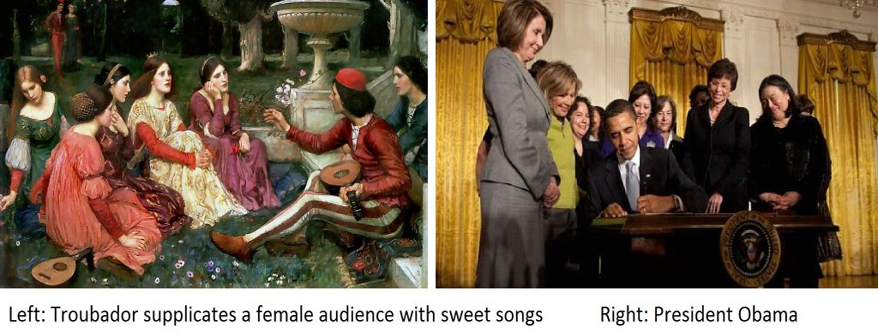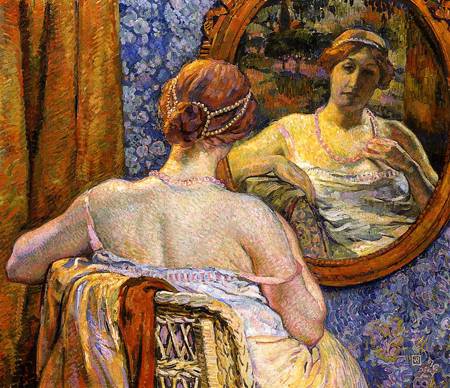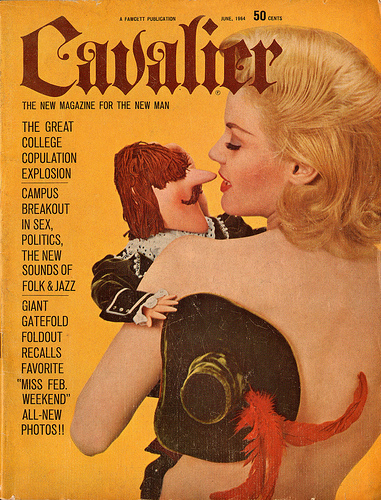By Douglas Galbi
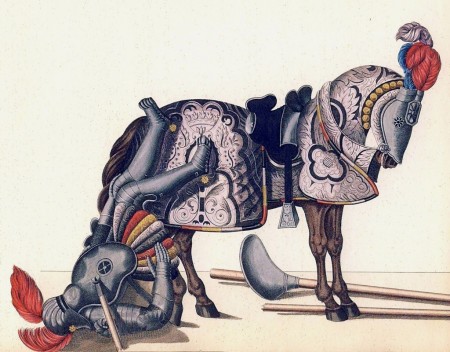
In medieval Latin love lyrics, courtly lovers yearn for carnal love. They praise women’s bodily beauty, they beg for love and pitifully lament being rejected, and they plaintively foretell their death through lovesickness. Medieval clerics, white knights, and courtiers are standard-bearers of courtly love. They display ignorance, dogma, and fantasy that endures to our day as an alternative to the empirical science of seduction.
For long now I have shown myself
to be a devoted soldier of Love,
as whose bidding I rushed headlong
to commit foolish, daring deed,
loving at great hazard
one who never casts a kindly eye on me.
If I now entirely ceased,
I would serve myself well,
But only the inferior man
flees the clamor of battle.
Let it be, as I will!
Carelessly I offer my life to fortune’s hazards.
She must know of my soul’s greatness,
greater than my bodily form,
for I climb the loftiest bough
seeking for fruit on the tree
and claiming: guile
has no place in a lover who knows no fear.[1]
Soldiers of love are men who believe in the ideology of courtly love. They are men such as Ulrich von Liechtenstein, Suero de Quinones, and Nitin Nohria. Living in fantasies, they are generally not successful in love with women. They commonly became bitter men who hate themselves and other men. They tend to marry as beta-provider hubbies. They face a high risk of sexless marriage and being cuckolded. You don’t want your son, if you have one, to become that kind of man.
In the Middle Ages, just as in our current Dark Age, a few transgressive poets challenged the benighted scholars, gynocentric apparatchiks, and sophistic social-climbers that construct and re-enforce the ideology of courtly love. Drawing upon the full resources of classical, biblical, and contemporary culture, these poets offered a messianic secret. Their secret is accessible only to those who read medieval Latin poetry knowingly.
If I were to speak with angelic and human tongues,
I could not describe the prize, no worthless one.
By that I am rightly set above all Christians,
while unbelieving rivals envy me.
Sing, my tongue, therefore of causes and effects!
Yet keep the lady’s name cloaked,
so that it isn’t spread widely among the people,
and the secret is kept apart and hidden from the masses.{Si linguis angelicis loquar et humanis,
non valeret exprimi palma, nec inanis,
per quam recte preferor cunctis Christianis,
tamen invidentibus emulis profanis.
Pange, lingua, igitur causas et causatum!
nomen tamen domine serva palliatum,
ut non sit in populo illud divulgatum,
quod secretum gentibus extat et celatum.} [2]
The medieval Latin poem Si linguis angelicis, written in a Latin meter associated with satire, subtly mocks the delusions of courtly love. The lover’s case history begins with plausible circumstances of despair:
In a beautiful, flowering bush I stood,
turning around in my heart this: “What should I do?”
I hesitate to plant seeds in infertile soil.
Loving the flower of the world, behold, I am in despair.”{In virgultu florido stabam et ameno,
vertens hec in pectore: “quid facturus ero?
dubito, quod semina in harena sero;
mundi florem diligens ecce iam despero.} [3]
This stanza thoroughly mixes sexual and biblical imagery: standing erect in a beautiful bush, God from a burning bush instructing Moses, sexual intercourse not propitious for creating descendants as numerous as the sand on the seashore, and the microcosm-macrocosm flower of the world / vulva of God. Life is wonderfully complex. The question in despair for every man conscious of his human nature: “what should I do?”
In the context of deeply rooted social hostility toward men’s sexuality, men increasingly are choosing to do nothing. As an alternative to life in the flesh, historically much more prevalent than pornography has been fantasies of courtly love:
I saw a blossoming flower, saw the flower of flowers,
saw a May rose more beautiful than all others,
saw a shining star brighter than the rest,
by which I passed into the experience of love.{Vidi florem floridum, vidi florum florem,
vidi rosam Madii cunctis pulchriorem,
vidi stellam splendidam, cunctis clariorem,
per quam ego degeram sentiens amorem.}
The experience of courtly love centers on other-worldly idealization of the beloved woman. The deluded lover, feeling ineffable joy from this imaginary woman, rushes to her and greets her on bended knee:
Hail, most beautiful one, precious jewel!
Hail, glory of virgins, maiden glorious,
hail, light of lights, hail, rose of the world,
A Blanchefleur and a Helen, a noble Venus!{Ave, formosissima, gemma pretiosa,
ave, decus virginum, virgo gloriosa,
ave, lumen luminum, ave, mundi rosa,
Blanziflour et Helena, Venus generosa!} [4]
Yes, even in medieval times, most women would regard this guy as creepy. She doesn’t even know him. He had seen her at a summer feast, fully five or six years ago. Since then, he has been suffering grievously from lovesickness. He has never spoken to her, but he thinks of her:
Drink, food, and sleep have deserted me,
By medicine I am unable to be healed.
…
These privations and many more have I endured,
No consolations fortify against my cares,
except repeatedly in the darkness of night
I am with you in forms shaped by the imagination.{Fugit a me bibere, cibus et dormire,
medicinam nequeo malis invenire.
…
Has et plures numero pertuli iacturas,
nec ullum solacium munit meas curas,
ni quod sepe sepius per noctes obscuras
per imaginarias tecum sum figuras.}
Offering a fantastic alternative to the folklore motif “man gets sex without paying for it,” the imaginary woman declares:
So tell me, young sir, what you have in mind;
do you ask for silver, so as to enrich yourself,
or for precious stones to adorn yourself?
For if it be possible, I will give you whatever you seek.{Dicas ergo, iuvenis, quod in mente geris;
an argentum postulas, per quod tu diteris,
pretioso lapide an quod tu orneris?
nam si esse poterit, dabo quidquid queris.}
Imagine — while he was secretly pining for her, she was also secretly in love with him! Even better, she wants to give him expensive gifts. Needless to say, real life five or six years after seeing a beautiful woman, but not speaking to her, isn’t like this. Continuing more realistically, the man dallies further verbally. Recognizing that he needs additional, explicit instruction, as many students do after being terrified in mandatory affirmative-consent classes, the loving woman declares:
Whatever you want to do, such I cannot foreknow,
however to your entreaties I desire to consent.
Therefore, what I have, sedulously investigate,
undertaking, if you can find it, whatever you seek.{Quicquid velis, talia nequeo prescire;
tuis tamen precibus opto consentire.
ergo, quicquid habeo, sedulus inquire,
sumens si quod appetis, potes invenire.}
She speaks like a true scholastic. She even offers a hint of now-fashionable gender ambiguity. The lover throws his arms around her neck and kisses her a thousand times. As Ovid said after hugging his mistress Corinna’s lovely, naked body, who doesn’t know what then ensued?[5] Men bitter with the failures of courtly love will find pleasure in this fantasy. They must not lose heart, but have stronger hope that repeated failures of courtly love indicate forthcoming success.[6] Can anyone doubt that triumph in courtly love comes from fantasy, not empirical science?
Medieval Latin poetry shows a still more excellent way. With guile, amused mastery, and fear for his holiness, a man can aspire to be like God to the woman he wants to love:
Game, he may game, you all game! In your jesting now listen,
the sweet joys of the present life soothe and make merry:
the player roles the dice,
the student by his embraces
would delude women.
Love must be sung in sweet melodies;
It should not be held back in the shackles of grave homilies.
A little maiden should pledge her hand,
she flowering like a rose,
overcome by pious words.
She should say “yes!” readily, not refusing when asked,
Not inquiring of the aforesaid man’s standing.
She should do what is asked;
what is neglected to be requested,
the lauded young woman should provide.{Lude, ludat, ludite! iocantes nunc audite,
quos presentis gaudia demulcent leta vite:
histrio tesseribus;
clericus amplexibus
deludat mulieres.
Amor est iam suavibus canendus melodiis,
qui non tardet gravibus detentus homiliis.
spondeat puellula
florens quasi rosula,
verbis devicta piis.
Dicat “ita!” facile, nil deneget rogata,
non viri notitiam rimetur prenotata.
faciat, quod petitur;
quod prece negligitur,
prestet virgo laudata.} [7]
The Virgin Mary said yes to the mysterious words of the angel Gabriel. About two millennia later, the Mystery Method has been extensively field-tested. Among all possible outrages — and medieval Latin provided now inconceivably broad latitude for outrageous words — the greatest of these is love.
* * * * *
Notes:
[1] Carmina Burana 166 (Iam dudum Amoris militem), from Latin my English translation, with borrowings from the English translations of Marshall (2014) p. 205 and Walsh (1993) p. 187. In the final Latin line, Walsh replaces non from the manuscript with nunc and translates the last two lines thus:
claiming that in a lover who knows no fear there is now a role for native talent.
Perhaps climbing trees is a “native talent,” but that makes little poetic sense in context. For the original manuscript text, Walsh provides the alternate translation:
in a lover who knows no fear, there is no place for the crafty approach.
Id. pp. 187-8. My translation is similar, but makes more clear that the relevant craft is social ingenuity (ingenio): guile.
The phrase amoris militem (soldier of Love) “sounds the keynote of the poem; this is to be the proclamation of the courtly lover.” Id. p. 187. Ovid explored that theme, but with much more insight and sophistication.
[2] Carmina Burana 77 (Si linguis angelicis loquar et humanis) st. 1-2, from Latin my English translation, with borrowings from the English translations of Marshall (2014) p. 101-5 and Walsh (1993) pp. 65-8. Here’s a complete Latin text of the poem from Biblotheca Augustana. Above I provide the Latin text from id. pp. 62-65. That Latin text has some small differences from Bibliotheca Augustana‘s Latin text. All the subsequent quotes above, except the final one, are similarly from Si linguis angelicis, stanzas 3, 6, 8, 20 (ll. 1-2) & 21, 26, and 28. This poem has survived only in the Carmina Burana manuscript (Bavarian State Library, Munich, clm 4660/4660a).
The opening line of Si linguis angelicis cites 1 Corinthians 13:1. The next three lines are boastful and arrogant. Cf. 1 Corinthians 13:4. Robertson (1976/1980) p. 141 insightfully notes:
the assertion of that self-esteem after the suggestion of charity in the first line is more than a little ridiculous and hence humorous. I do not mean that it produced loud laughter, but I am confident that it did produce a smile.
The reference in the second line to the prize (palma) plausibly derives from Apocalypse 7:9. Id.
The second stanza’s first two words Pange, lingua evoke the crucifixion hymn of Venantius Fortunatus. Fortunatus wrote that hymn for the presentation of a cross relic to Queen Radegund at Poitiers in 570. It subsequently was commonly used in the Christian liturgy for Good Friday. Robertson provides a learned exegesis of the phrase causas et causatum:
The rare participle causatus (from causo rather than the usual Classical causor) used substantially occurs prominently in only one familiar {sic} work: the translation of Aristotle’s Posterior Analytics by Boethius. It appears in 1.7 toward the close in the clause “cum non ex causatis sciat causis,” which forms part of an argument to show that demonstrative principles appropriate to one discipline cannot be used for demonstration in another discipline unless the axioms of the two are the same, or unless one discipline can be thought of as being logically subordinate to the other.
Without being able to draw upon insights from the subsequently developed body of seduction field reports, Robertson makes a false distinction:
Divinity and seduction do not have the same axioms, since it is an axiom of Divinity that fornication is forbidden. For the same reason Divinity cannot be subordinated to seduction. The two are incompatible, and our lover is speaking foolishly.
Id. p. 142. On the messianic secret, Mark 8:29-30 and Romans 16:25-6. On men’s love for women in relation to crucifixion, Ephesians 5:25. The issue of divinity and seduction is further elaborated in the discussion of Lude, ludat, ludite! above.
The satire on courtly love in Si linguis angelicis hasn’t been recognized within Latin literary scholarship that largely celebrates man-oppressing courtly love. Considering Si linguis angelicis, Dronke declares:
The poet makes constant liturgical allusions — yet these are not in any way parodistic or blasphemous: they are not to establish an incongruity but to overcome one.
Dronke (1965) p. 318. The poem is written in a “goliardic” meter. That form is commonly associated with “satirical or jocular purposes.” Walsh (1993) p. 69. The poem has technical similarities with the immediately preceding poem in the Carmina Burana, Dum caupona verterem. Id. pp. 59-60. Dum caupona verterem is about a man of distinction who spent three months in a brothel having sex with Venus. He left as a pauper with fantastic memories. In contrast to Dronke’s and Walsh’s views, both poems seem to me to ridicule men’s ignorance and folly in love.
[3] The phrase in harena more literally means “in sand.” Cf. Mark 4:5-6. Ovid, Heroides 5.115 associates sowing seed in sand with prophecy of death. The context is Paris leaving Oenone for Helen. Walsh (1993) p. 70, which notes that reference, observes “the crudity of this double entendre is lightened by the literary reminiscence.” Male sexual function isn’t crude; it’s natural, beautiful, and in some instances fruitful. In context, the reference to sand evokes barrenness. The reminiscence of Helen and the Trojan War adds a dark note of brutal violence against men.
[4] The first three lines of the above stanza evoke Marian hymns. The fourth line refers to a secular romance and traditional Roman myth. Walsh (1992) p. 197 observes:
The identification of the loved one with Helen, who is cited as an exemplum of peerless beauty without animadversion to morals, should not have troubled Dronke, since it is a prominent feature in other lyrics and is recommended in the rhetorical handbooks.
Robertson offers broader insight:
Although it is true that in the twelfth century after it became commonplace to see the bride in the Canticle as Mary, the attractiveness of her physical attributes was sometimes indicated in very frank terms, and love for her was often expressed in what is today startling imagery, no one would seriously have sought to combine the Blessed Virgin, Blanchefleur, Helen and Venus in the same person. To deny that the effect of this line is humorous seems to me to be insensitive. Whatever we may think of Blanchefleur, Helen had an unsavory reputation in the twelfth century; and it would hardly have been possible for a girl to be a “virgo gloriosa,” which Helen certainly was not, and a “Venus generosa” at the same time.
Robertson (1976/1980) p. 145. Being humorous doesn’t exclude the serious purpose of challenging the dominant ideology of courtly love.
Medieval writers fearlessly combined sacred and profane themes. Carmina Burana 215 (Lugeamus omnes in Decio) uses the form of the Mass as a disparaging liturgy against the god of dice. The mid-fifteenth-century Middle English poem Kyrie, so kyrie rewrites Jankyn’s subordination to Alisoun. The Arundel Lyrics is a wide-ranging collection that evokes the extraordinary mixture of the Incarnation. Boncompagno da Signa (c. 1170- c. 1240) in his Rhetorica novissima declared:
A certain man who had had carnal knowledge of a nun said: “I did not defile the divine bed, but since the Lord had favored me in his words, I wished to raise his horn.” Moreover, a nun could say to her lover: “Thy rod and thy staff, they comfort me.”
From Latin trans. Huot (1997) p. 67. Cf. on Boncompagno, Dronke (1965) p. 318. Luke 2:23 offered possibilities for celebrating the sacredness of men’s sexuality. For relevant discussion, Huot (1997) p. 67.
[6] Cf. the last two stanzas of Si linguis angelicis. Those stanzas offer platitudinous inspiration for courtly lovers:
So let every lover be mindful of me. He must not lose heart, though at that point his lot is bitter. For certainly some day will dawn upon him at which he will later triumph over his troubles.
Indeed it is from bitterness that pleasant joys are sprung; the greatest gains are not won without toils. Those who seek sweet honey often feel the sting, so those whose lot is more bitter should maintain the stronger hope.
Trans. Walsh (1993) p. 68. A later hand inserted amara (bitternesses) to make the first line of the final stanza to be in part “it is from bitterness that bitternesses are sprung.” With some dissent, modern scholars have tended to amend amara to grata (pleasant joys). Id. p. 73.
Interpretations of Si linguis angelicis have varied considerably within common respect for courtly love. Walsh declared:
The poem is serious insofar as the poet enthusiastically associates himself with the courtly experience, but the theme is handled wittily as a literary mode rather than with deep emotional involvement. In short, the composition is a stylized exercise
Id. p. 68. Robertson didn’t take the poem seriously. He speculated its “original purpose may have been to serve as a grammatical exercise for students.” Robertson (1976/1980), p. 150. Dronke read the fantasy of courtly love in Si linguis angelicis to cover seriously amour courtois generally:
‘Si linguis angelics’ draws together some of the poetically most notable attitudes of the twelfth-century courtois love-lyric. … In many ways I am tempted to see this poem almost as an emblem of the twelfth- and thirteenth-century European poetry of amour courtois.
Dronke (1965) p. 330. The above quote is part of the concluding paragraph for the whole interpretive volume of Dronke’s learned and influential work on medieval Latin love lyric.
Scholars haven’t recognized the seriousness of the parodic critique of courtly love in Si linguis angelicis. Courtly love ideology has deep psychological roots among elite men. Walsh’s view of twelfth-century clerics probably applies more accurately to many leading modern scholars of medieval literature: their understanding of seduction is “filled in imagination by love encounters with the pen rather than by personal approaches to ladies in real life.” Walsh (1992) p. 203. The modern empirical science of seduction and online documentary field reports enable much better appreciation for extraordinary medieval Latin love poetry.
[7] Carmina Burana 172 (Lude, ludat, ludite!), from Latin my English translation, with borrowings from the English translations of Marshall (2014) p. 210. Flowering like a rose, interpreted as blushing, suggests an erotic aspect of pious words. Marshall, id., entitles the poem Magicians of Love. Mystery, the eponym of the Mystery Method, seduced women under the persona of a magician.
Dronke declares:
All mankind {humanity} is one in love, all aspects of love are linked. This is the basic assumption of a poem such as ‘Si linguis angelicus’. It is grounded in a unity of experience which can affirm divine love and every nuance of human love without setting up dichotomies: all are involved together in the ‘Rota Veneris’.
Dronke (1965) p. 318. Those abstract assertions, which have little connection to the text of Si linguis angelicus, can be given considerable textual and practical meaning with respect to Lude, ludat, ludite!
[image] Knight knocked off his horse. From Kottenkamp, Franz, and Friedrich Martin von Reibisch. 1842. Der Rittersaal, eine Geschichte des Ritterthums, seines Enstehens und Fortgangs, seiner Gebra?uche und Sitten. Stuttgart: Carl Hoffmann. Thanks to Wikimedia Commons.
References:
Dronke, Peter. 1965. Medieval Latin and the rise of European love-lyric. Vol. 1 — Problems and interpretations. Oxford: Clarendon Press.
Huot, Sylvia. 1997. Allegorical play in the Old French motet: the sacred and the profane in thirteenth-century polyphony. Stanford, Calif: Stanford University Press.
Marshall, Tariq. 2014. The Carmina Burana: Songs from Benediktbeuren: a full and faithfull translation with critical annotations. 3rd edition. Los Angeles: Marshall Memorial Press.
Robertson, D. W. 1976/1980. “Two Poems from the Carmina Burana.” American Benedictine Review 27 (1): 36-59, reprinted pp. 131-50 in Robertson, D. W. 1980. Essays in medieval culture. Princeton, N.J.: Princeton University Press (cited to pages in 1980 reprint).
Walsh, Patrick Gerard. 1992. “Amor Clericalis.” Ch. 12 (pp. 189-203) in Woodman, Anthony. J., and Jonathon G. F. Powell, eds. Author and audience in Latin literature. Cambridge, England: Cambridge University Press.
Walsh, Patrick Gerard. 1993. Love lyrics from the Carmina Burana. Chapel Hill: University of North Carolina Press.
Creative Commons Attribution-ShareAlike 3.0 Unported License.

